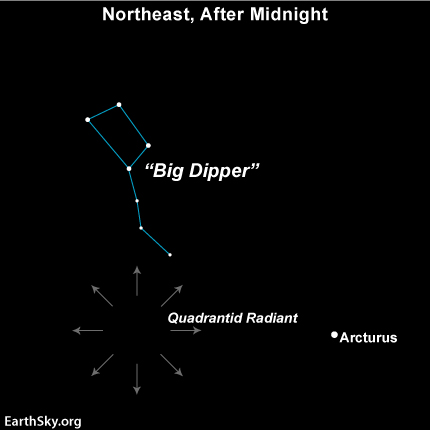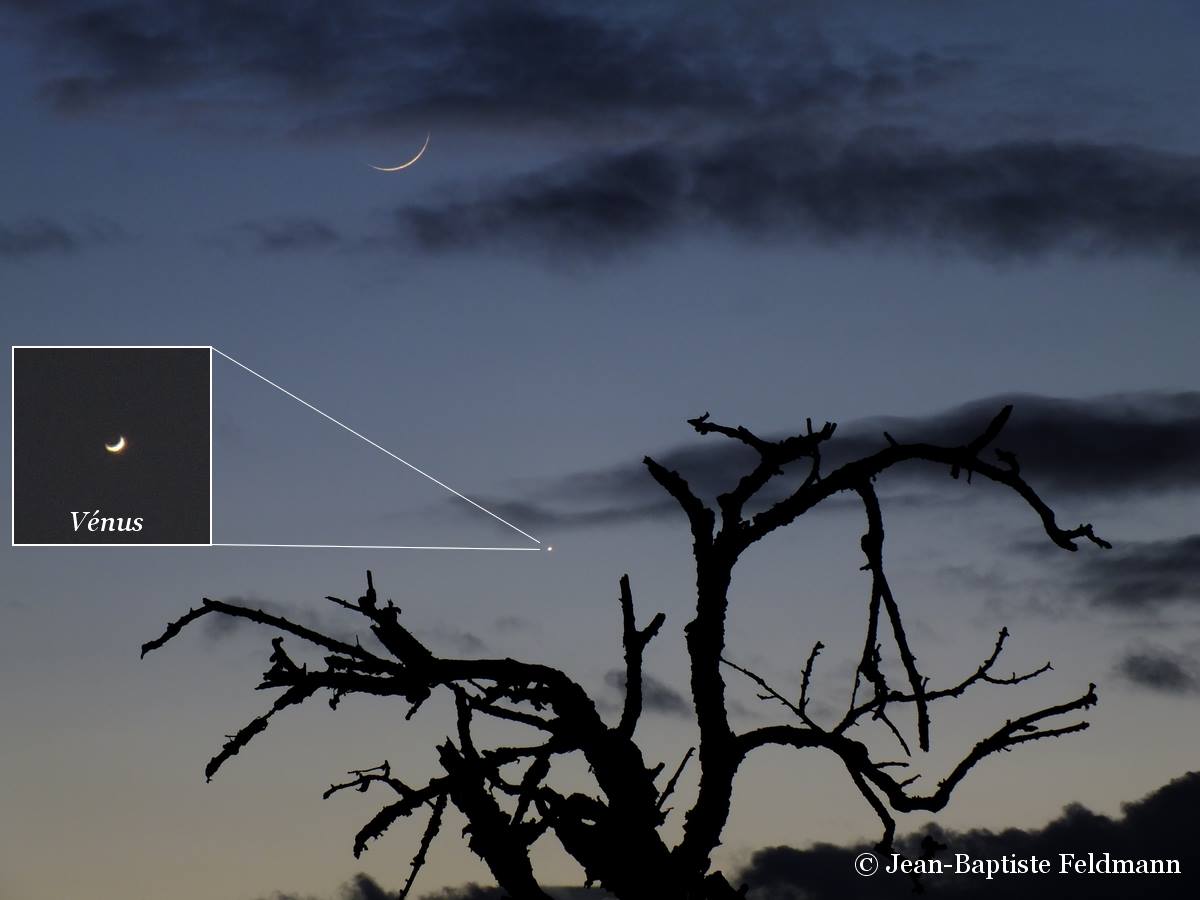
Tonight for January 2, 2014
This meteor shower favors the Northern Hemisphere. That’s because its radiant point – the point in the sky from which the meteors appear to radiate – is far to the north on the sky’s dome.
Plus the Quadrantid meteor shower is capable of matching the meteor rates of the better known August Perseid and December Geminid showers. It has been known to produce up to 50-100 or more meteors per hour in a dark sky.
So why isn’t the Quadrantid shower as celebrated as the Perseid and Geminid showers? It’s because the Quadrantid shower has a narrow peak that lasts for only a few hours. If you miss the peak – which is easy to do – you won’t see many meteors.
If you’re thinking of watching the Quadrantids, do it. Meteor shower peaks are rarely certain, and sometimes a gamble on a shower will reward you with a good show. Just be aware you might not see a whole lot of meteors! No matter where you are in the Northern Hemisphere, the best time to watch is between midnight and dawn, local time. Fortunately, yesterday’s new moon guarantees moon-free nights for watching the January 2014 Quadrantid meteor shower!
Moonset and sunrise times for your sky

The
radiant point for the Quadrantids is far to the north on the sky’s
dome. That’s why this shower is better for the Northern Hemisphere than
the Southern Hemisphere.
But you don’t need to find the radiant to enjoy the Quadrantids. You need a dark, open sky, and you need to look in a general north-northeast direction for an hour or so before dawn. That’s the Quadrantid meteor shower – before dawn January 3 and 4, 2014 – for the world’s northerly latitudes. If you’re in Asia, you might try between midnight and dawn on January 5 as well. Who knows? This shower can produce up to 50 or more meteors per hour, but its peak is rather short and sweet. But it’s worth a try in 2014, since we’re guaranteed of moon-free skies skies for the 2014 Quadrantid meteor shower.

View larger.
| Jean-Baptiste Feldmann captured this photo of a thin crescent moon –
and a thin crescent Venus – on Thursday, January 2, 2014. You need a
telescope to see Venus as a crescent. Visit Jean-Baptiste Feldmann Photogrpahies on Facebook
http://earthsky.org/tonight/quadrantid-meteor-shower-before-dawn-in-early-january


Let us all pray we're stars for enough time to see our light shine and know the brighter and more stars the better!
ReplyDelete